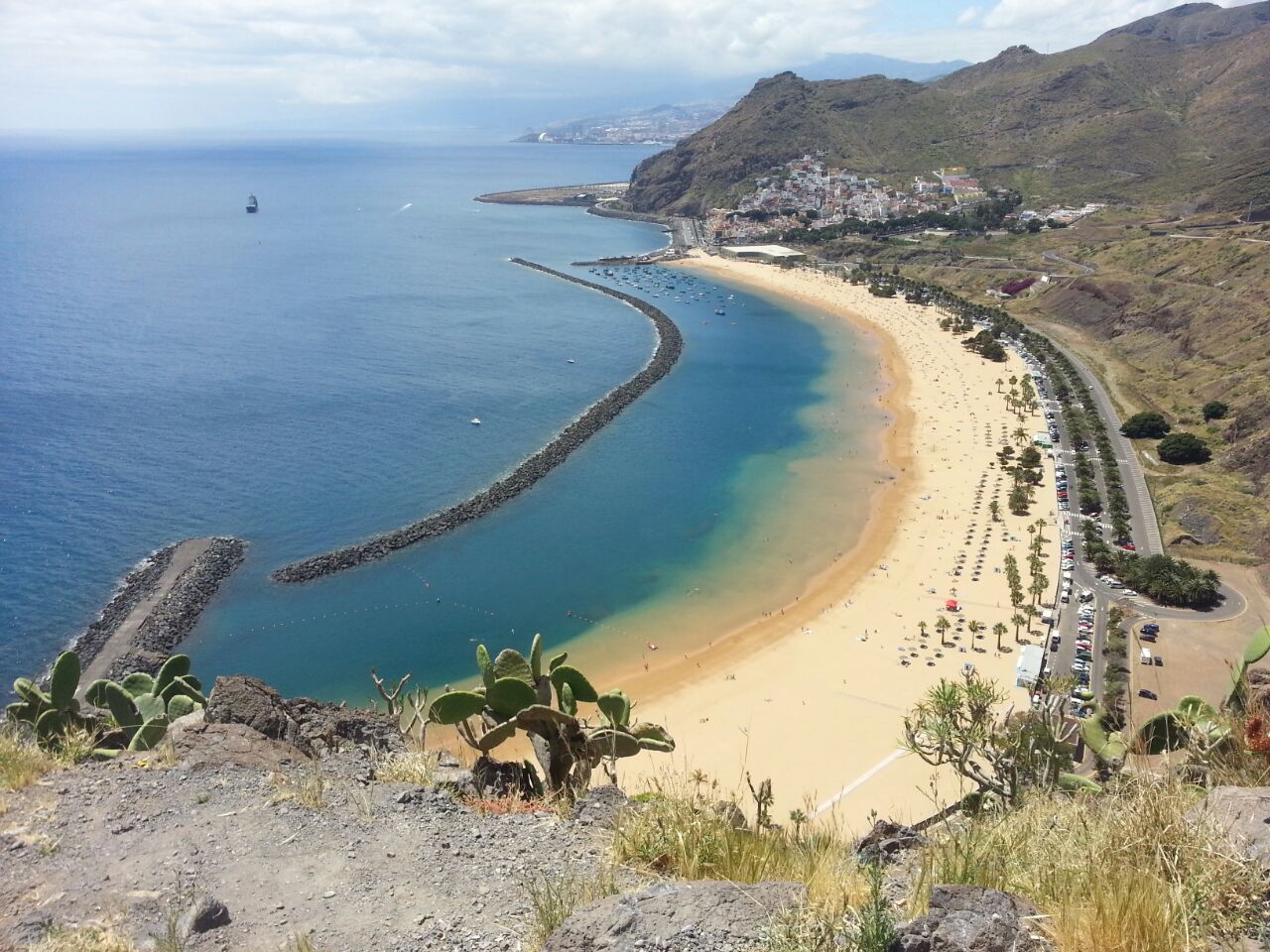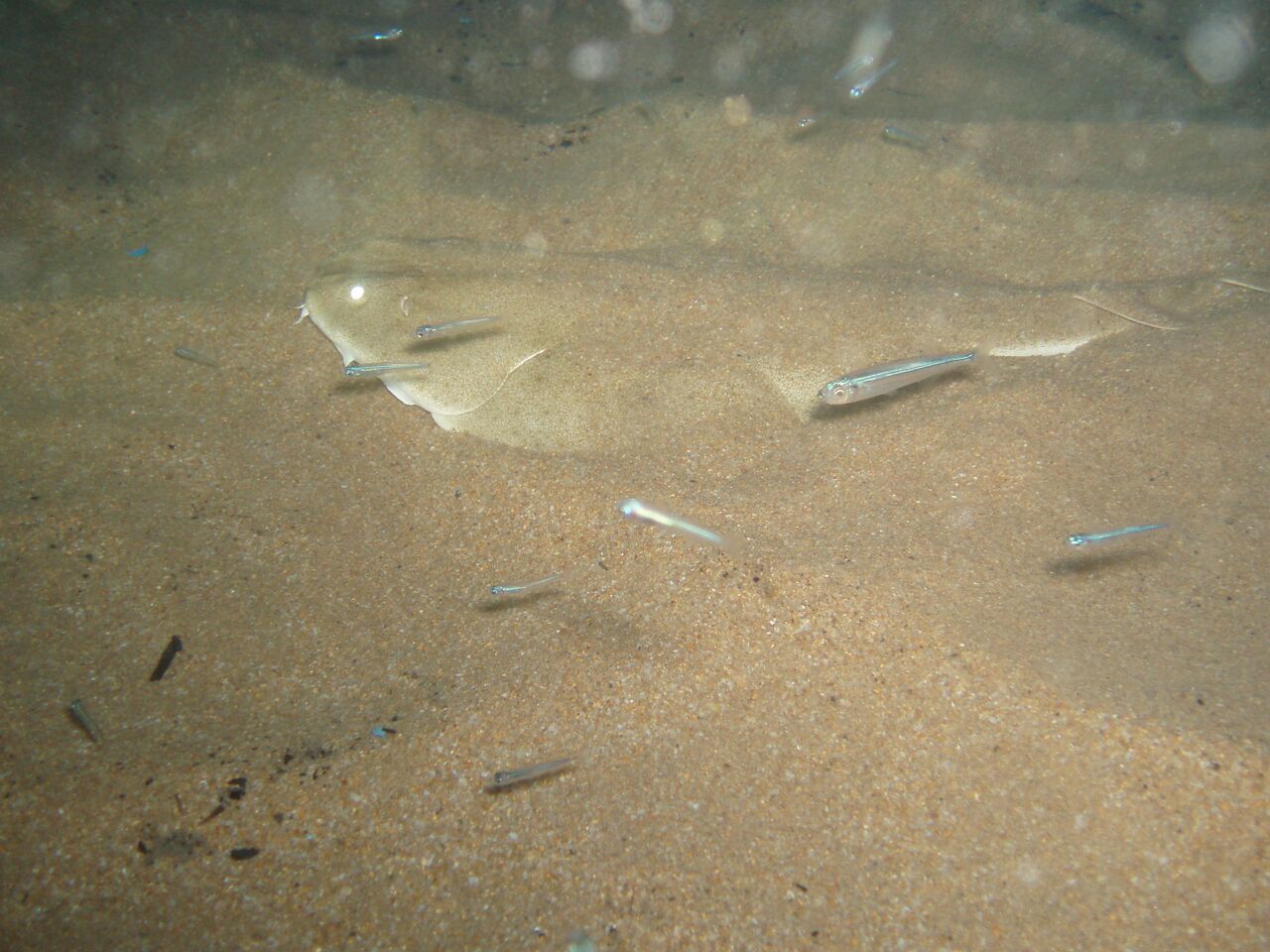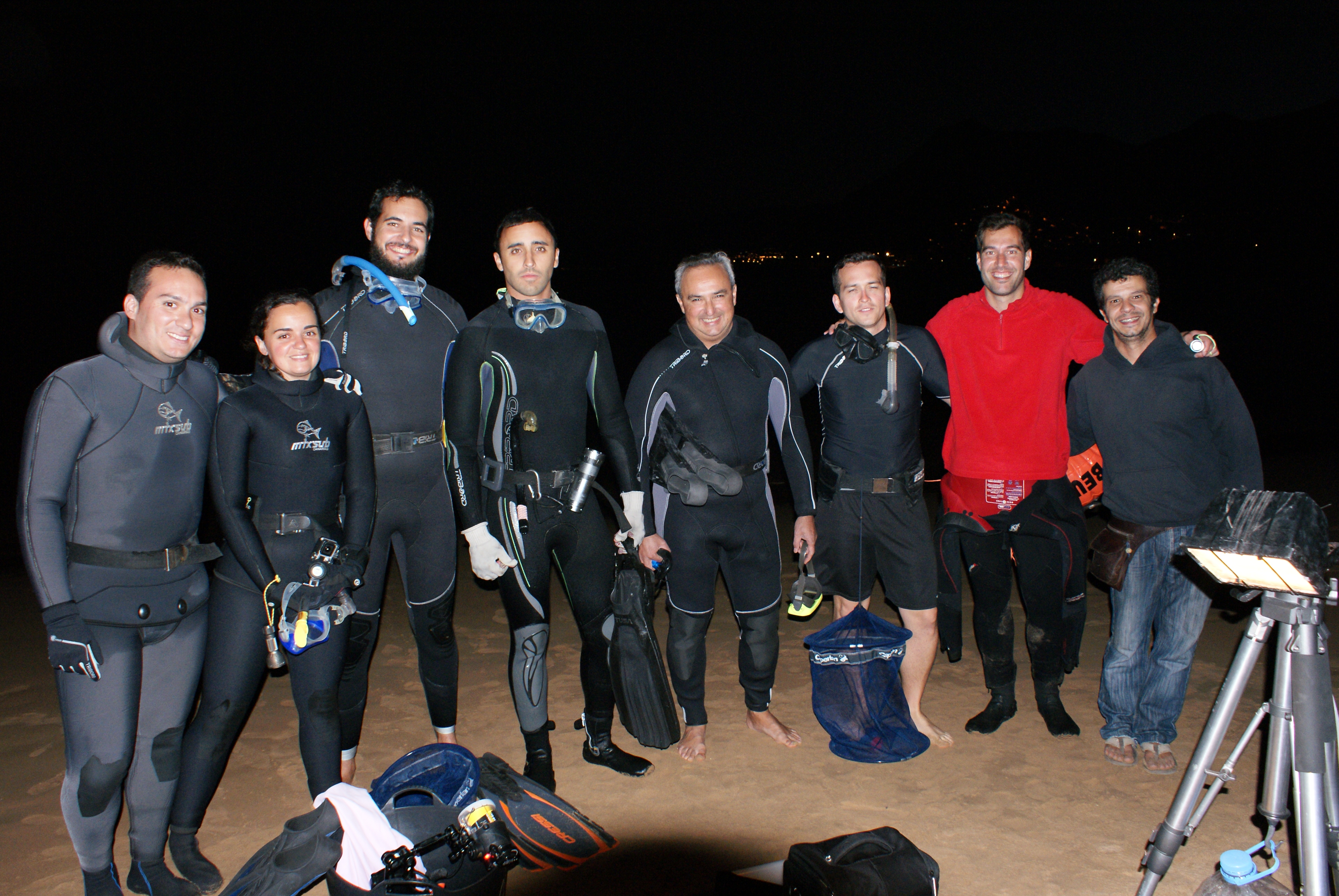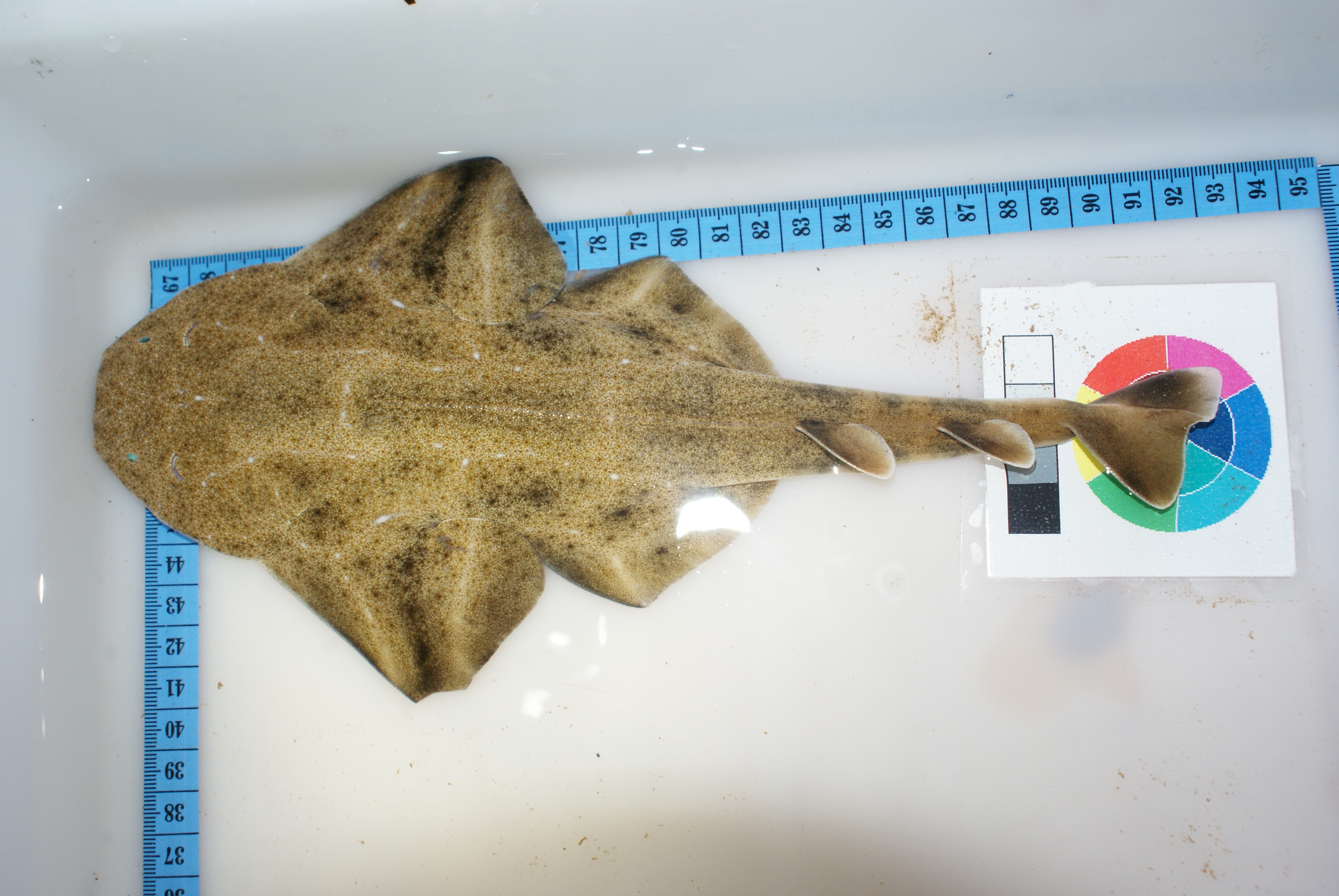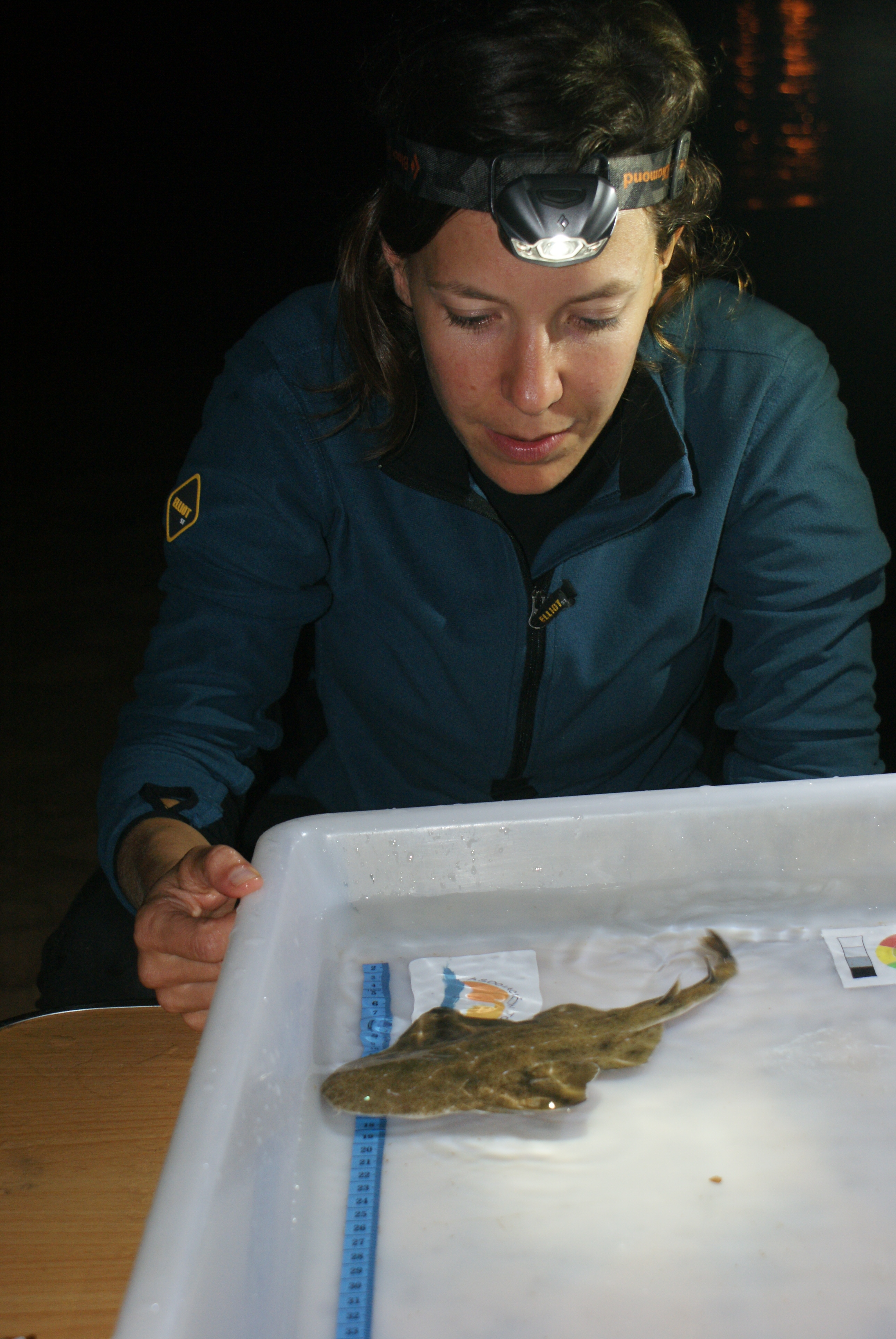Common ground
As part of our angel shark tagging campaign in the Canary Islands, we are focusing specifically on a very interesting beach called Las Teresitas. The reason for choosing this beach as our natural laboratory is quite simple: it is the largest nursery area for the Critically Endangered angel shark that we have discovered so far in Europe.
Located only 15 minutes away from the capital, Santa Cruz, Las Teresitas is the most popular tourist beach on Tenerife. It’s entirely artificial, created in the 1970s when hundreds of tons of white sand were shipped from the Western Sahara to the island (Tenerife’s beaches are normally of black sand). With its beachfront bars, this stretch of fine golden sand not only attracts hundreds of tourists every day, but within only four decades it has become a home to diverse fish species. Most importantly, it has attracted the rarest shark species in Europe: the angel shark.
During the day, Las Teresitas is crowded: women are doing their aqua aerobics, children of all ages are playing and tourists are sunbathing and drinking cocktails. The angel sharks, however, remain unnoticed, buried in the sand and well hidden.
At night, hungry little angel sharks and a crew of volunteers helping me to find and tag them replace the tourists in the shallow water off the beach.
Together with our partner NGO Asociacion Tonina, we only tag baby angel sharks on this particular beach. The adults are always tagged underwater using a self-made device and following a tagging protocol that we came up with especially for angel sharks. In my next blog I will explain more about underwater tagging.
Searching for juvenile angel sharks at Las Teresitas is very easy as they are close to the shore in water no deeper than half a metre. The crew usually divides into one snorkelling team and one diving team that searches in deeper areas.
We normally find our first shark within no more than 10 minutes. Once caught, the shark is taken to our mobile lab on the beach where it is photographed, measured, weighed, sexed and tagged, and a small clip is taken from a fin.
Why angel sharks have chosen this crowded beach as a nursery ground is still a mystery, but we know that they come back here every year to give birth to dozens of pups. We will continue to tag and monitor them to get a better understanding of their use of this area, which could be a good example of co-existence between sharks and humans.

